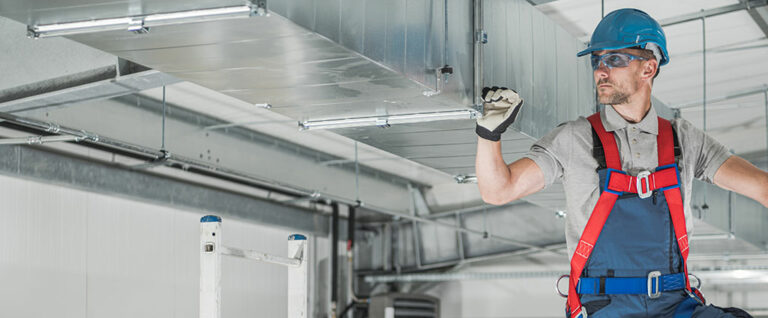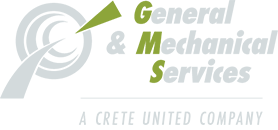
Spring Maintenance Checklist for your Commercial HVAC & Plumbing System
When you’re getting your commercial premises ready for the summer, whether you are responsible for an office building, a school or a hospital, don’t forget to include a thorough checklist for your HVAC, mechanical and plumbing systems. This will help avoid future breakdowns and ensure you are ready for when the warmer weather comes along.
A commercial business typically requires continuous heating, ventilation or air conditioning and any major breakdown in your commercial HVAC, mechanical or plumbing system can result in either serious inconvenience for your customers and employees, or shutdowns or periods of downtime. In either scenario, the consequences are the same: your business stands to suffer loss of income. To avoid all of this, you should plan to carry out regular preventive maintenance and cleaning on your HVAC, mechanical and plumbing systems.
Schedule a professional inspection and tune-up
Regular Spring preventive maintenance on cooling units – if you are not on a regular schedule with a commercial HVAC contractor, you should plan to remedy that as soon as possible. At the very least, plan for a one-off service visit to:
- Add lubricants to moving parts including fans and motors to maintain smooth functionality, remove any signs of corrosion or accumulation of dirt and tighten bolts.
- Conduct testing of sensors, valves, relays and shutoff switches to ensure adequate control of the flow of air and temperature.
- Check refrigerant levels – the heat from a room is pumped out of a room or an entire building through the use of refrigerants. If refrigerant levels are low, the cooling unit has to work much harder than it should to maintain a comfortable temperature. Contaminants will also reduce the efficiency of your cooling unit.
- Monitor the pressure and inspect for leaks to ensure pressure is within normal range to prevent gasket blowouts and other potential defects in your cooling unit.
- Change your air filter to ensure that dust and other particles are significantly minimized.
- Remove debris from around the outdoor condenser units. If there are leaves, twigs, grass or other debris on the units, airflow will be reduced, vents could become blocked and the condenser coils might get bent, all of which means the heat exchange will be less efficient.
- Clean the indoor components which consist of the blower fans, evaporator coils and control panels, which are susceptible to dirt accumulation.
- Inspect the electrical and electronic components for faulty wirings which have the potential to cause short-circuit sparks and fires.
- Clean the drain lines so that the moisture can flow freely.
Perform Chiller & Cooling Startup Procedure
Many cooling systems are idle or off during the winter months and are often drained to prevent freezing. These extended shutdowns provide the conditions for deposits to form and bacteria to grow so it is vital that you perform a start up process for chillers and cooling towers prior to bringing them fully online and making them operational in an occupied building. That should include:
- A physical cleaning of the wet areas, where accessible, including the water basin, water sumps, fill materials, spray nozzles and wet decks. Also, inspect any permanent filter housings and clean or replace media if required.
- Fill the cooling system and initiate the pumps to check that water circulates through all piping and heat exchangers in the system. Place any filtration units online and remove any debris that may have deposited.
- Water treatment control equipment including automated pumps, meters, sensors and valves should be inspected, calibrated and functional and then you will need to perform a sanitization of the cooling towers. System fans can be turned on once the water quality has been confirmed within normal operating levels.
- Once the above has been completed, the system can be placed into normal operation mode. If you have multiple cooling towers, chillers or heat exchangers, it is optimal to ensure that the systems utilizing them are rotated frequently to minimize biological growth. Steps should be taken to prevent equipment from sitting idle for long periods as stagnation can lead to deposits, fouling and bacterial growth.
- For a best practice approach, a sample of water should be taken from the water basin or flow to the spray nozzles for legionella culture analysis and records of water quality should be kept throughout the cooling season.
Plan for Chiller Rentals
In anticipation of chiller season, rental chiller planning should be something you need to address. Whether this is something you have to plan for on an annual basis because a chiller has failed, you need a backup chiller or you have a project planned that will need a temporary chiller, now is the time to get it arranged. Currently, there are a number of supply chain delays and capital constraints and you don’t want your site or project to be affected. A rental can be an option to bridge the gaps or be a solution in and of itself.
Plan for HVAC Repairs or Replacements
The spring is also a time to plan out your schedule for any heating system repairs or replacements you may need. Again, with supply chain delays on a lot of HVAC, mechanical and plumbing equipment, advance planning is your friend:
- Now is the time to consider any boiler replacements. Newer models typically require less maintenance than older boilers which can lead to energy savings. Waiting until there is a major problem can result in costly emergency repairs and inconvenience for your building occupants.
- Heat pumps run on electricity so switching over to a heat pump system will not only help to reduce greenhouse gas emissions if you switch from fossil fuel heating, but right now, may be eligible for considerable rebates from your local utility.
Check your Evaporator Coil
One of the points of failure in an air handler is the coil. An evaporator coil can last for many years but it will eventually wear out and need to be repaired or replaced. Regular maintenance checks should be able to identify coils that are likely to fail so take the time to plan their replacements now.
Carry out a steam trap and line survey
The spring is also a good time to carry out steam trap and line surveys and repairs that you might have put off over the winter months. A steam trap and line survey is essentially a review of your facilities’ steam system to identify oversized, misapplied, failing or leaky steam traps or lines. Identifying these issues will not only cut energy waste but will optimize your plant’s performance, improve system reliability, reduce maintenance costs and increase uptime.
Perform backflow preventer testing and repairs
Backflow preventer testing and repairs are necessary to prevent potentially major interruptions to your business or facility and serious illness among your staff members, customers and clients. Scheduling an inspection can help identify issues early and correct them before they cause serious issues for your business.

about the author
Greg Lilly, President and Owner of General & Mechanical Services, LLC
Greg Lilly is a Johns Hopkins University graduate with over 30 years of experience in mechanical services focused on providing energy efficient solutions and strategies within facilities, central plants and data centers.

